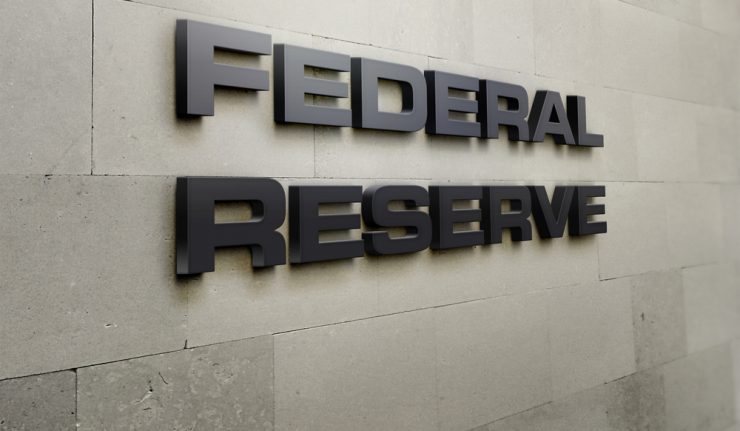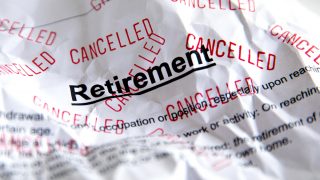The Fed wants the American public to believe they’re working for a freer, fairer market…
… and that their goals are lofty and noble.
In reality, they’re only interested in accumulating power.
Despite appearances, the Federal Reserve doesn’t care about a free and transparent market.
Even before the Great Recession, the Fed had taken deliberate actions to accumulate power for one single purpose…
…to fuel the engine we call Fed-Led Capitalism.
Take the latest Fed meeting, for example.
The members of the Fed made it look like they deliberated and then paraded Jerome Powell out for questions like some debutante making her debut.

This is all a sleight of hand to convince average investors to throw good money after bad into overpriced stocks and juiced-up government debt.
So, what is the Fed really up to?
And how will it impact your future investment decisions?
Strap in folks, because we’re about to peel back the veneer plastered over the Fed and show you the dirty secrets that its been hiding from the public.
Feeding the Pig
Did you know the original Fed mandate was to enhance the stability of the American banking system?
It was only concerned with the “inelastic” currency problem.
You see, back in the day, confidence in the banks wasn’t high. Runs would occur, with banks unable to supply enough money to meet depositor demand.
The Fed enabled banks to quickly convert loans and other assets into cash for a nominal fee, making them the lender of last resort.
Funny enough, the Federal Reserve Act did NOT mention monetary policy.
However, it did require the Reserve Banks of the Fed to maintain goal reserves equal to or greater than a specific percentage of their outstanding loans and liabilities.
Thus, Fed banks could only lend so much to private banks, effectively curbing inflation.
In the 1920s, the Fed began to adjust its discount rate and buy and sell U.S. government debt to achieve macroeconomic objectives, which was permitted by the Federal Reserve Act, but not required.
This created the foundation for what later became the Fed’s near-complete control of the U.S. economy.
So, why on Earth did it make this change in the 1920s?
Think about what happened during that decade.
We saw the rapid industrialization of the global economy. Financial markets became more developed, including stock markets. There was also, unsurprisingly, a large amount of political pressure.
It’s with no small sense of irony that the very decade the Fed tried to achieve macroeconomic objectives directly preceded the Great Depression.
Yes, we’re saying outright what you already considered — The Federal Reserve was directly responsible for the Great Depression.
As the Weimar Republic showed, economic disparity between segments of the population leads to consolidation of power.
In the years that followed, the U.S. government slowly pushed more and more authority into the central bank and away from its regional branches.
The massive deficit spending tied to World War II only exacerbated the problems.
It was around that time the Fed came up with the arbitrary 2.5% inflation rate.
The 1960s and 1970s saw stagflation and desperation take hold.
By 1978, we had the Fed with its current dual mandate.
Unpacking the Concept of Fed-Led Capitalism
Given this progression, it’s not hard to see why the Fed holds inordinate power today.
It single handedly has the ability to control equity and debt markets.
Just look at what happened in the throes of the COVID panic during March 2020.
The Fed stepped in and said it would buy debt, exchange-traded funds, equities, you name it.
It would wield enormous influence over markets in a way we’d never seen.
Democrats might be as sharp as a marble when it comes to running the government. But they understand that too big to fail is a problem born and bred by the Fed.
Why else would we see equities with the largest market caps able to borrow at basically nothing?
Heck, Amazon issued $10 billion in debt at 0.4% for a 3-year note to 2.5% for a 40-year bond.
Yet, despite the well-intentioned and horribly managed Paycheck Protection Program (PPP), small businesses suffered the brunt of the economic collapse.
Then again, that’s exactly how the Fed designed the system.
Average investors and small businesses cannot access the same kinds of credit available to larger companies. Nor can we invest the same way as institutional money.
And every single action the Fed takes perpetuates this reality.
Just look at the housing market.
The average interest rate for a 30-year mortgage is north of 7%. Yet, the supply of homes hasn’t increased.
All the Fed managed to do was strip money out of our pockets and put it on a bank’s balance sheet.
Exactly how is that fair or helpful for the working class?
Strategizing for the Fed-Led World
Individually, none of us can change the course of the Fed. That’s a problem left to our leaders (or lack thereof).
However, it doesn’t mean we can’t actively engage the markets in ways to exploit the situation.
Knowing when and where the Fed plans to select winners and losers is key to generating long-term wealth in equity markets.
The latest Fed meeting won’t tell us anything we didn’t already know — that it is “data dependent” and housing remains a sticky problem.
But if you read between the lines, there’s one very clear message.
The Fed is able and willing to wreck the U.S. economy to maintain its position of power.
It will actively drive us into a recession to bring inflation down — inflation it is single-handedly responsible for creating.
The only way to invest properly is to frame everything in both a macroeconomic and a historical context.
Dr. Mark Skousen has been doing exactly this for decades.
As a renowned economist, historian and investor, Dr. Skousen takes a unique approach to equity investing.
He doesn’t just evaluate a company on its fundamentals, but he also looks at the industry and sector through its business cycle and sensitivity to manipulative influences like the Fed.
He understands how government policy directly impacts any given ticker, which, given the dingbats in Washington barreling towards a spending shutdown, is rather prescient.
That’s why we encourage you to listen to his latest economic analysis that lays out some pretty stunning predictions.




